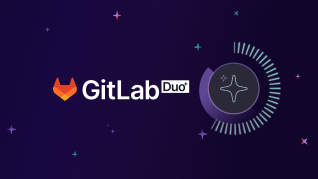GitLab, Inc. is dedicated to open source – we believe in it, use it, and give back to it, and we have an open core business model. We also care deeply about artificial intelligence (AI) – we recently announced that we are investing heavily in AI by infusing it into every phase of our comprehensive DevSecOps platform.
We were thus very interested to see Responsible AI Licenses' recent release of a model license relevant to both the open source and AI communities: the BigScience Open RAIL-M license (RAIL-M).
We see RAIL-M as an exciting but flawed development in the AI model licensing space. Its authors’ intentions are admirable and important, but in practical terms, RAIL-M still has room for improvement.
What is RAIL-M?
RAIL-M is part of the Open Responsible AI Licenses (Open RAIL) family, which is a collection of AI licenses that aim to promote responsible use by imposing behavioral use restrictions on the model’s licensees and downstream users. The Open RAIL family is not alone – it’s within a new wave of licenses (see, for example, the TII Falcon LLM License) spawned by the public’s recent interest in AI. RAIL-M specifically applies these use restrictions to the model (the “M” in RAIL-M stands for “model”).
This blog discusses RAIL-M specifically, and does not consider the other licenses in the Open RAIL family.
RAIL-M puts ethics at the forefront
In recent months, much ink has been spilled over the novel ethical dilemmas that AI presents. Technologists, journalists, and companies alike have sounded the alarm on the various societal harms that AI could exacerbate (see, for example, OpenAI, Google Deepmind, and other AI companies’ recent open letter declaring that AI poses a “risk of extinction”). Regulators are taking notice. Recently, OpenAI’s CEO Sam Altman testified in a Senate hearing on AI’s risks, and a key committee of European Parliament lawmakers approved the EU AI Act, which aims to mitigate AI’s potential harms.
RAIL-M places these ethical considerations front and center. Its restrictions prohibit the AI model’s licensees and their downstream users from engaging in potentially harmful uses such as applying the model in a way that violates applicable law, to provide medical advice, or to harass or defraud others.
These provisions’ practical implications are, admittedly, still a bit unclear. Regardless, these use-based restrictions will, at the very least, deter some from applying the model in harmful ways, and help push ethical considerations to the forefront of today’s fast-paced AI landscape. In the words of the Organisation for Economic Co-operation and Development (OECD): “OpenRAILs are a vehicle towards the consolidation of an informed and respectful culture of sharing AI artifacts acknowledging their limitations and the values held by the licensors of the model.”
In practice, RAIL-M isn’t perfect
First, describing RAIL-M as an “open” license – as RAIL-M’s authors have in its title – is misleading. RAIL-M’s authors conflate royalty-free access and flexible use and re-distribution with truly “open” licenses. The Open Source Initiative (OSI) defines “open source” as software that, among other qualities, “must not restrict anyone from making use of the program in a specific field of endeavor.” RAIL-M’s use-based restrictions – which include prohibitions on providing medical advice, and generating information to be used for the administration of justice or law enforcement – prevent it from being a truly “open” license.
Second, regulators such as those in the EU will likely pass laws imposing certain use restrictions on AI tools in the near future. RAIL-M doesn’t cover how its own use-based requirements will interact with AI-related laws, which may present an issue if, for example, a RAIL-M restriction conflicts with one of these new regulations.
Finally, commentators, including Kyle Mitchell and Luis Villa, have also expressed concerns that some of RAIL-M’s requirements may be too vague to comply with.
A net benefit to the AI community
RAIL-M isn’t perfect. However, setting aside its practical flaws, RAIL-M’s release is still an important signal both to and from the AI community that AI ethics matter and must be considered even (and perhaps especially) when offering free, publicly-available models. To again quote the OECD: “[l]icenses [like those in the Open RAIL family] … should not be conceived as burdensome legal technical mechanisms, but rather as a communication instrument among AI communities bringing stakeholders together by sharing common messages on how the licensed artifact can be used.”
RAIL-M, and the Open RAIL family as a whole, will likely encourage the AI community – both AI model maintainers and perhaps even proprietary model creators – to consider, and work to mitigate, their models’ potential harms and abuses. We’ll be interested to see where it goes.
Cover image by Google DeepMind on Unsplash
Lorem ipsum dolor sit amet consectetur. Elit augue tincidunt volutpat nulla erat. Elit quam libero pulvinar consequat aliquam luctus vehicula tortor. Vel ullamcorper a nunc eget pretium nisl iaculis. Tempus fringilla adipiscing pulvinar semper tellus."

Find out more!
Want to dig deeper into the basics of DevSecOps and how to use it to drive business success?




